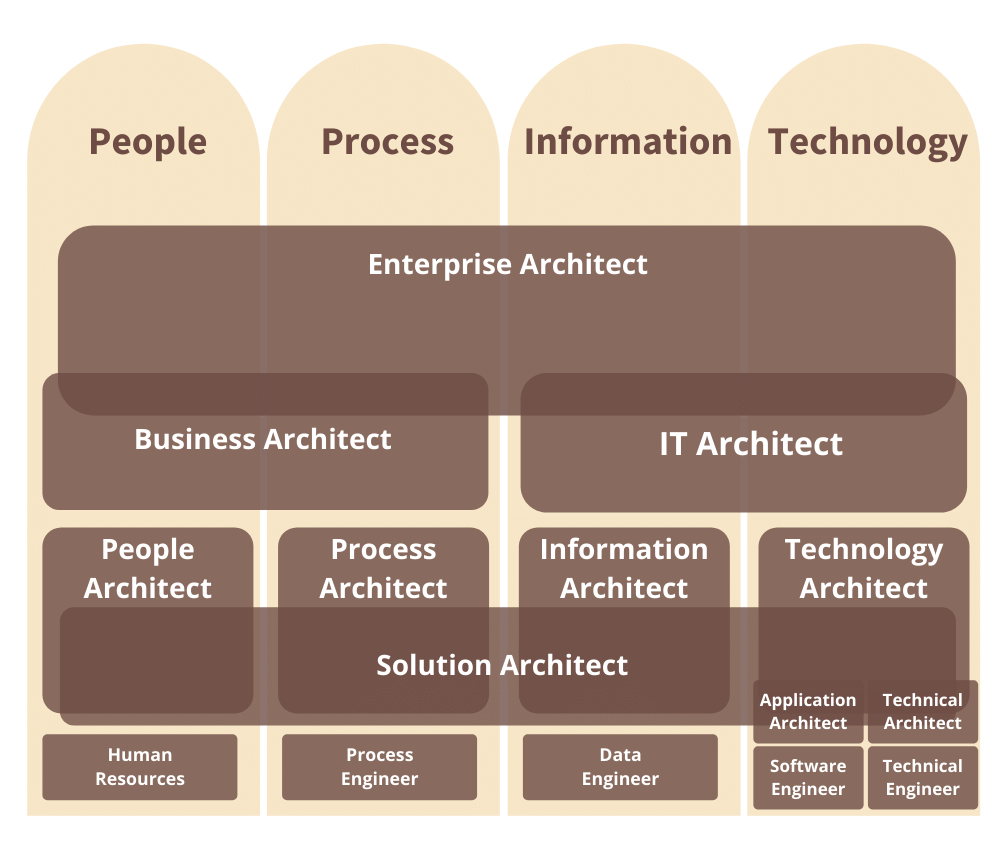A career in architecture

A career in architecture offers such a vast array of options and opportunities it is sometimes difficult to know where to start. Together, lets try and work it out….
Introduction
The good news for any aspiring architect is that architecture offers a truly amazing career opportunity that has a massive depth and breadth within an organisation yet has the power to transform everyone in it and everyone who interacts with it. There are hundreds of thousands of organisations across nearly every industry who need these roles that are well paid and can offer an exciting role.
The bad news is that unlike other carers such as accountancy or our namesakes in civil and building architecture, architecture within organisations has no central body that defines the various kinds of roles or the knowledge and clear career paths that is common.
This is probably due to architecture being relatively young (that is decades not centuries old) as well as the breadth and depth of the subject matter across so many differing organisations with many but no clear-cut methodologies, making it hard to create a common set of positions with well defined skills.
You will find however is that the employment agencies and organisations have created their own set of job titles from which we can start to work out what the role may entail but without several paragraphs describing the position, one title can be used for two quite different positions that mean completely different things – but it is a start!
The roles we play
We cover these roles in the roles we play and can find out more about these roles there, but let me cover some of this here to help you understand a little about each so you can see if these are something you aspire to and how you might get into these roles.
The best way i have found is to draw a diagram that we can refer to that describes each of the kinds of architect that shows the focus each role has, Firstly we look at the various categories that an architect can work in including people, process, information or data and technology. This may be a surprise to you if you thought that architecture was just about technology, and you would not be alone, but it is much more than that.
The lower down you are in this diagram, the closer to real-world we are, dealing with the people themselves, the day to day processes, the data we use and the applications and technology we use day to day.
When an organisation gets bigger and more complex, we tend to simplify all of this – and this is the focus of those roles higher up the diagram. The higher up we go, the simpler the categories become. Think of using google or bing maps and zooming in (moving lower) or zooming out (moving higher) – having a street view is handy if you need to get a few blocks or to another town or city but not so useful if you need to get to another country on another continent.

For mid-sized organisations, the roles often cover more depth and may span multiple roles shown in the diagram above. For smaller enterprises and less mature organisations, you are likely to find that there are fewer architects spanning just a subset of the categories with the rest of the areas often informally covered by CIO/CEO’s and other leaders and managers.
Lets take a few of these roles and see what they do day to day…..
Size matters
As an organisation grows to a particular size, the roles and activities of architecture grow more important to a point where dedicated architects begin to be required. Up until that point, the roles can be played by other people who often cover multiple roles. Although there is no set point, i have found that as the organisation reaches a point where it may call itself and enterprise then architects start to offer significant value.
As a rough guide, I have often found this to be when an organisation has several hundred staff, Until that point they may employ engineers who fulfil some of the role of architect along with the managing director and others. There is however no right or wrong time in the life of an organisation to employ someone who can focus on the organisational, business and technology architecture. Sometimes smaller organisations see benefit in employing a dedicated architect and in some cases larger organisations have none, but as the scale and complexity grows, architecture becomes more and more important.
The way we deliver
(probably better as a separate article
Where are you coming from?
You can enter architecture from a number of areas, each brining with them a unique perspective, skills and experience that can stand you in good stead for a future career in architecture.




